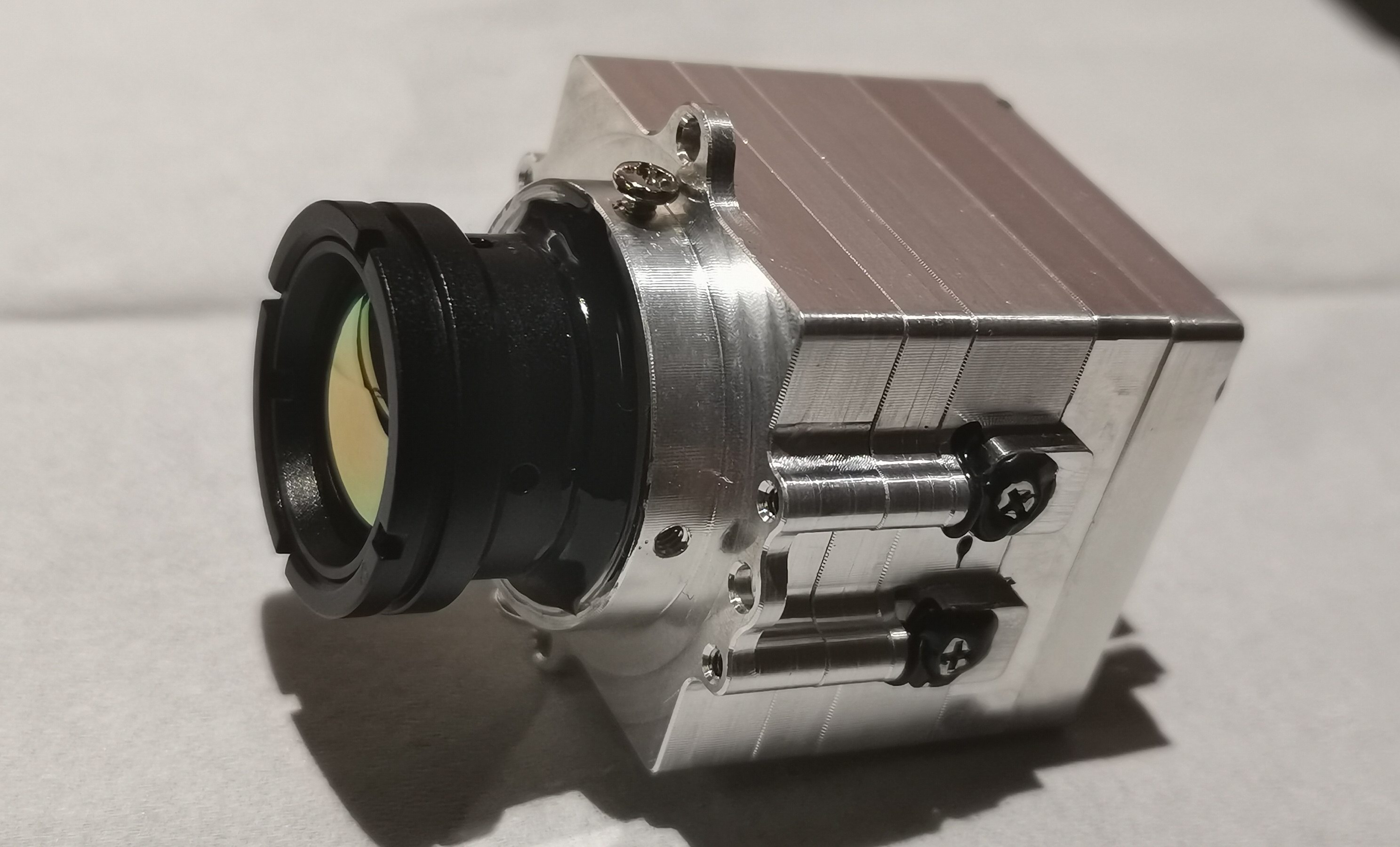The Ultimate Guide to Choosing the Best Drone with Thermal Imaging Camera

Introduction to Drones with Thermal Imaging Cameras
Drones equipped with thermal imaging cameras have revolutionized various industries and activities, offering unique capabilities that traditional cameras cannot provide. These advanced devices are designed to capture thermal images of objects and environments, making them invaluable tools for a wide range of applications.
What is a Drone with Thermal Imaging Camera?
A drone with thermal imaging camera is a specialized unmanned aerial vehicle (UAV) that integrates a high-resolution thermal camera into its system. This innovative technology allows the drone to capture heat signatures from objects and areas, converting them into visible images that can be analyzed and interpreted. The resulting thermal imagery provides valuable insights into temperature variations, which are invisible to the naked eye or standard visual cameras.
Why Use Thermal Camera Drones?
The utilization of thermal camera drones offers numerous advantages over traditional imaging methods, making them indispensable in various fields. These drones can detect heat sources and temperature differences with exceptional precision, enabling users to identify anomalies, monitor changes, and conduct thorough inspections from an aerial perspective. Additionally, they are widely used for search and rescue operations, wildlife monitoring, building inspections, agricultural assessments, and security surveillance.
Understanding Thermal Camera Drones
Thermal camera drones are equipped with advanced technology that enables them to capture thermal images of objects and environments. These drones play a crucial role in various industries and activities, offering unique capabilities that traditional cameras cannot provide.
How Do Thermal Cameras Work?
The Science Behind Thermal Imaging
Thermal imaging operates on the principle of detecting heat signatures emitted by objects and converting them into visible images. Unlike standard visual cameras, which rely on light to create images, thermal cameras detect the heat emitted by objects, creating a thermogram that represents the temperature variations within the scene.
Thermal Imaging in Drones
When integrated into drones, thermal imaging technology allows for aerial capture of thermal data. The drone-mounted thermal camera captures infrared radiation emitted by objects and converts it into visible images. This capability provides valuable insights into temperature differentials, enabling users to identify hotspots, cold spots, and other anomalies from an aerial perspective.
Benefits of Using Drone with Thermal Imaging Camera
Applications in Various Industries
Thermal camera drones have diverse applications across numerous industries. In agriculture, they are used to assess crop health and monitor irrigation efficiency by detecting variations in plant temperatures. Additionally, these drones aid in building inspections by identifying heat leaks or electrical faults that are invisible to the naked eye. Furthermore, they are employed in search and rescue operations to locate individuals based on their body heat signatures.
Advantages Over Traditional Cameras
The use of thermal camera drones offers several advantages over traditional imaging methods. Unlike visual cameras, thermal cameras can capture images in low-light conditions or through obstructions such as smoke or fog. This makes them invaluable for surveillance and security applications where visibility may be compromised. Moreover, their ability to detect heat sources allows for efficient wildlife monitoring without disturbing natural habitats.
Key Features to Look for in a Drone with Thermal Imaging Camera
When considering the purchase of a drone with thermal imaging camera, several key features play a crucial role in determining its effectiveness and suitability for specific applications.
Camera Quality and Resolution
The camera quality and resolution are paramount factors to evaluate when selecting a drone with thermal imaging capabilities. A high-resolution thermal camera ensures that the captured images provide clear and detailed thermal data, allowing for precise analysis of temperature differentials. It is essential to prioritize drones equipped with advanced thermal imaging technology that can deliver sharp and accurate thermal imagery, enabling users to identify anomalies with exceptional clarity.
Flight Time and Battery Life
Another critical aspect to consider is the flight time and battery life of the drone. Longer flight times and extended battery life are advantageous, especially when conducting comprehensive aerial inspections or surveillance missions. Drones with prolonged flight capabilities allow for more extensive coverage of areas, ensuring thorough monitoring and data collection without frequent interruptions for recharging or battery replacements.
Range and Connectivity
The range and connectivity of the drone's control system are vital considerations for ensuring seamless operation over varying distances. Opt for drones that offer extended range capabilities, enabling them to cover larger areas without losing connectivity or compromising data transmission. Additionally, robust connectivity features facilitate real-time monitoring and analysis of thermal data, enhancing operational efficiency across diverse applications.
Durability and Weather Resistance
When selecting a drone with thermal imaging camera, it is essential to prioritize durability and weather resistance to ensure reliable performance in diverse environmental conditions.
Durability Considerations
The drone's structural integrity and build quality are crucial factors that determine its ability to withstand impacts and harsh operating environments. Look for drones constructed from robust materials that can endure accidental collisions or rough landings without compromising functionality. Additionally, consider drones with reinforced frames and protective casing to safeguard internal components from damage during outdoor operations.
Weather Resistance Features
Thermal camera drones designed with weather-resistant features offer enhanced reliability in challenging weather conditions. Seek drones equipped with waterproofing capabilities, allowing them to operate seamlessly in rain or fog without the risk of water damage. Furthermore, advanced sealing mechanisms and corrosion-resistant coatings protect sensitive electronic components from moisture and humidity, ensuring consistent performance in various climates.
Ease of Use and Controls
The ease of use and intuitive controls significantly impact the operational efficiency and user experience when utilizing a thermal camera drone for aerial inspections or monitoring tasks.
User-Friendly Interface
Opt for drones equipped with user-friendly interfaces and intuitive control systems that simplify operation for both novice and experienced users. Clear and straightforward control layouts, accompanied by responsive feedback mechanisms, enhance the overall usability of the drone, promoting seamless navigation and precise maneuvering during flights.
Automated Flight Modes
Look for drones that feature automated flight modes, such as predefined flight paths or autonomous navigation functions. These capabilities streamline complex aerial tasks by reducing the need for manual piloting, allowing users to focus on data analysis while the drone autonomously executes predetermined missions with precision.
Remote Monitoring Capabilities
Consider drones that offer remote monitoring capabilities through dedicated mobile applications or software platforms. This feature enables real-time access to thermal data streams and live video feeds, empowering users to make informed decisions based on immediate insights gathered from the drone's aerial perspective.
Top Picks for Thermal Camera Drones
When it comes to selecting the best thermal camera drone, several options stand out based on their unique features and capabilities. Whether you are looking for an all-rounder, a budget-friendly choice, or a professional-grade solution, there are drones tailored to meet diverse needs.
Best Overall Drone with Thermal Imaging Camera
The DynaTherm X200 stands out as the best overall drone with thermal imaging camera. With its state-of-the-art thermal imaging technology and advanced flight capabilities, the DynaTherm X200 offers unparalleled performance for various applications. Its high-resolution thermal camera delivers clear and detailed thermal imagery, allowing users to identify temperature differentials with exceptional precision. Moreover, the extended flight time and robust connectivity features make it a reliable choice for comprehensive aerial inspections and monitoring tasks across industries.
Best Budget-Friendly Option
For those seeking an affordable yet reliable thermal camera drone, the SwiftSense T360 is an excellent budget-friendly option. Despite its cost-effective nature, the SwiftSense T360 does not compromise on quality or performance. Equipped with a competent thermal imaging camera and intuitive controls, this drone offers impressive functionality for its price range. Its user-friendly interface and automated flight modes make it an ideal choice for beginners or budget-conscious users looking to leverage thermal imaging capabilities without breaking the bank.
Best for Professional Use
Professionals requiring a top-tier thermal camera drone for specialized applications will find the ProScan 5000 to be the perfect fit. Engineered with cutting-edge thermal imaging technology and rugged durability, the ProScan 5000 excels in demanding environments and complex operational scenarios. Its superior camera quality, extended range capabilities, and weather-resistant features make it well-suited for professional use in fields such as infrastructure inspection, public safety operations, and environmental monitoring.
Best for Beginners
For individuals new to thermal imaging technology and aerial drone operations, the EagleEye E10 emerges as the ideal choice for beginners venturing into the world of thermal camera drones. This user-friendly drone is designed to provide a seamless and intuitive experience, catering to novice users while delivering impressive thermal imaging capabilities.
Simplified Operation
The EagleEye E10 features a simplified operation interface, making it easy for beginners to navigate its controls and execute aerial missions with confidence. Its intuitive control system and responsive feedback mechanisms ensure a smooth learning curve, allowing users to familiarize themselves with drone piloting and thermal imaging functions without overwhelming complexity.
Training Resources
Aspiring drone enthusiasts and beginners can benefit from the comprehensive training resources offered with the EagleEye E10. The package includes instructional materials, tutorials, and online support to guide new users through the setup process, flight operations, and thermal imaging data analysis. These resources empower beginners to gain a thorough understanding of the drone's capabilities and maximize its potential for various applications.
Entry-Level Affordability
The EagleEye E10 presents an entry-level affordability that makes it accessible to beginners seeking to explore thermal imaging technology without significant financial investment. Despite its budget-friendly nature, this drone does not compromise on essential features or performance, providing an excellent entry point for individuals interested in leveraging thermal camera drones for personal or hobbyist use.
Beginner-Friendly Features
Equipped with beginner-friendly features such as automated flight modes and simplified maintenance requirements, the EagleEye E10 streamlines the learning process for newcomers. Its automated flight modes reduce the complexity of piloting tasks, allowing beginners to focus on capturing valuable thermal data without extensive manual intervention. Additionally, simplified maintenance procedures ensure that beginners can easily care for their drone without technical expertise or specialized knowledge.
Making the Right Choice
When considering the purchase of a drone with thermal imaging camera, it is essential to make an informed decision based on individual needs, budget constraints, and the available options in the market. By evaluating specific criteria and conducting thorough research, consumers can ensure that they select a drone that aligns with their requirements and offers reliable performance for their intended applications.
Consider Your Needs and Budget
Before investing in a thermal camera drone, it is crucial to assess the specific needs and objectives driving the purchase. Different industries and activities may require varying capabilities from a thermal imaging drone, such as extended flight time for comprehensive inspections or high-resolution thermal imagery for detailed analysis. By identifying the primary use cases and operational requirements, individuals can narrow down their options to drones that best cater to their unique needs.
Moreover, establishing a realistic budget is fundamental when exploring the available choices in thermal camera drones. While advanced features and cutting-edge technology may be desirable, it is essential to strike a balance between functionality and cost-effectiveness. By setting clear budget parameters, consumers can focus on drones that offer optimal value within their financial constraints without compromising essential capabilities.
Read Reviews and Compare Models
Informed decision-making relies on comprehensive research and understanding of the available thermal camera drones in the market. Reading reviews from reputable sources provides valuable insights into the performance, reliability, and user experiences associated with different drone models. Evaluating professional assessments as well as user feedback offers a well-rounded perspective on each drone's strengths, limitations, and overall suitability for diverse applications.
Furthermore, comparing various models side by side allows consumers to identify key differentiators in terms of features, specifications, and performance metrics. This comparative analysis enables individuals to weigh the pros and cons of each drone against their specific requirements, facilitating an informed comparison that guides them towards selecting the most suitable option.
Look for After-Sales Support and Warranty
The availability of after-sales support services and warranty coverage significantly contributes to the overall value proposition of a thermal camera drone investment. Prioritizing drones offered by manufacturers or distributors with robust after-sales support ensures access to technical assistance, maintenance services, and troubleshooting resources when needed. This ongoing support enhances the longevity of the drone's operational lifespan while providing users with peace of mind regarding potential issues or concerns.
Additionally, examining the warranty terms accompanying each drone model is crucial for safeguarding against manufacturing defects or malfunctions. A comprehensive warranty package reflects the manufacturer's confidence in their product's quality and reliability while offering consumers recourse in case of unforeseen issues arising post-purchase.
By considering individual needs alongside budgetary constraints, conducting thorough research through reviews and comparisons, as well as prioritizing after-sales support and warranty coverage, consumers can make an informed choice when selecting a thermal camera drone that aligns with their expectations.
Conclusion
Recap of Key Points
In summary, the selection of a drone with thermal imaging capabilities involves considering several crucial factors to ensure optimal performance and suitability for specific applications. The key points to remember when choosing the right drone with a thermal imaging camera are as follows:
Thermal Imaging Technology: Understanding the principles of thermal imaging and its applications in various industries is essential for leveraging the full potential of thermal camera drones.
Key Features: Evaluating important features such as camera quality, flight time, range, durability, and ease of use plays a significant role in determining the effectiveness of a drone with thermal imaging capabilities.
Top Picks: Exploring top-rated options for thermal camera drones based on their unique features and suitability for different user requirements can guide individuals towards making informed choices.
Decision-Making Process: Considering individual needs, conducting thorough research, reading reviews, comparing models, and prioritizing after-sales support are critical steps in the decision-making process when selecting a drone with thermal imaging capabilities.
Final Thoughts on Choosing the Right Drone
Choosing the right drone with a thermal imaging camera is not merely about acquiring advanced technology; it is about investing in a tool that aligns with specific operational needs while offering reliability and performance. By carefully assessing individual requirements and conducting comprehensive research, consumers can make informed decisions that lead to selecting a drone tailored to their unique applications.
The versatility of thermal camera drones extends across diverse industries, from agriculture and infrastructure inspection to public safety operations and wildlife monitoring. Their ability to capture temperature differentials from an aerial perspective provides valuable insights that contribute to enhanced efficiency, safety, and resource management.
Moreover, the accessibility of budget-friendly options ensures that individuals at varying experience levels can leverage thermal imaging technology without substantial financial investment. This democratization of advanced aerial capabilities fosters innovation and creativity across hobbyist pursuits and professional endeavors alike.
In conclusion, the world of drones equipped with thermal imaging cameras offers boundless opportunities for exploration, discovery, and problem-solving. As technological advancements continue to enhance their capabilities and accessibility, these innovative tools are poised to play an increasingly integral role in shaping diverse fields through their unique perspective on temperature differentials and environmental dynamics. Whether for personal use or professional applications, choosing the right drone with a thermal imaging camera empowers users to unlock new dimensions of understanding within their respective domains.
See Also
Revolutionary Thermal Imaging Camera for Drones and Surveillance
Contact Us: Ms. Coco Huang
E-mail: sales@iasun.cn
WhatsApp/Wechat: +86 13510421923

